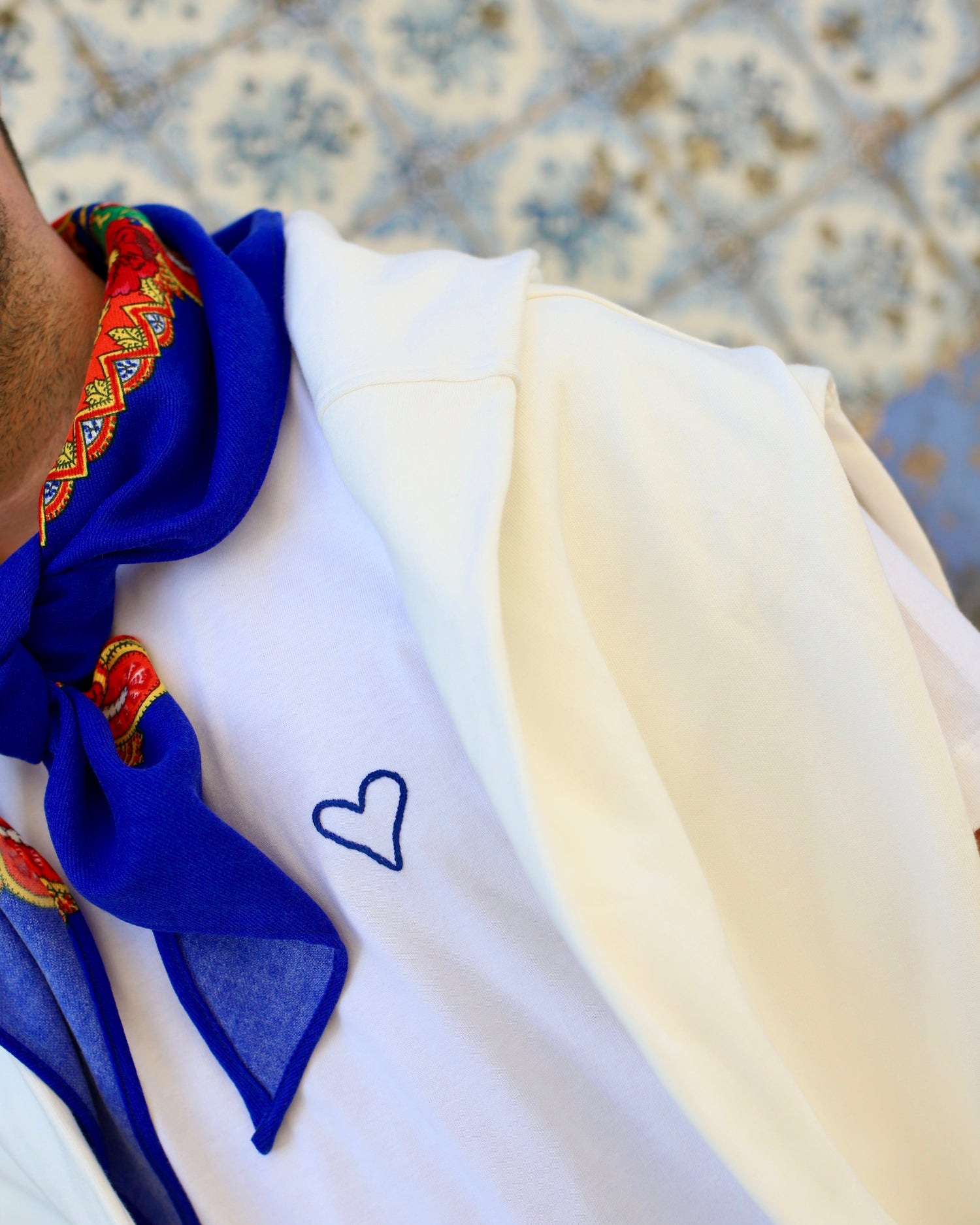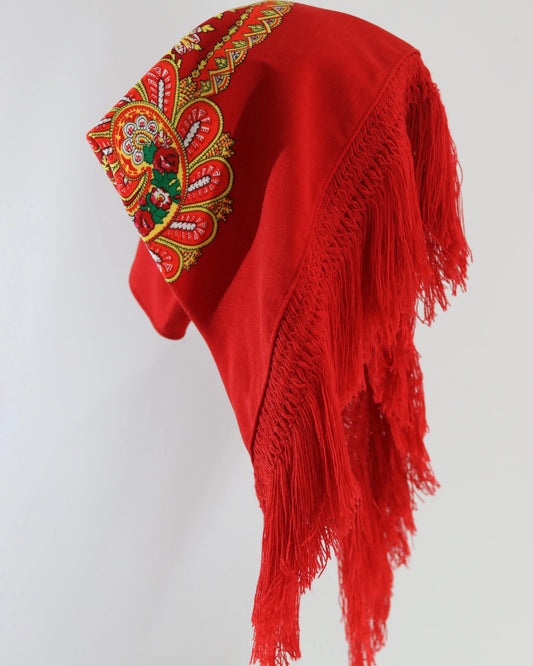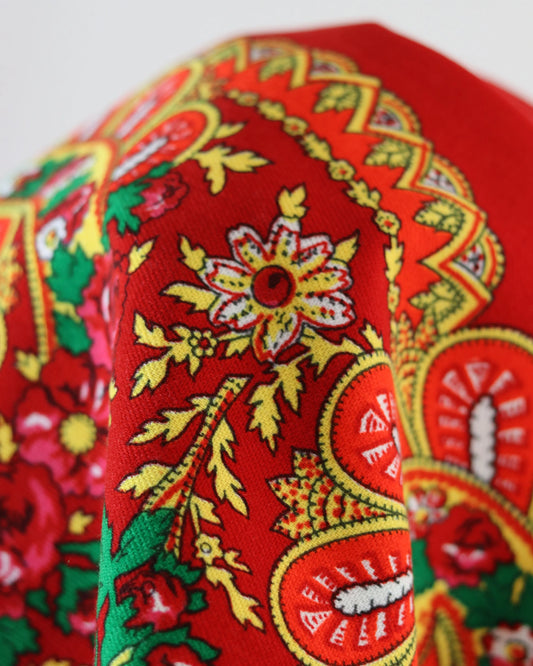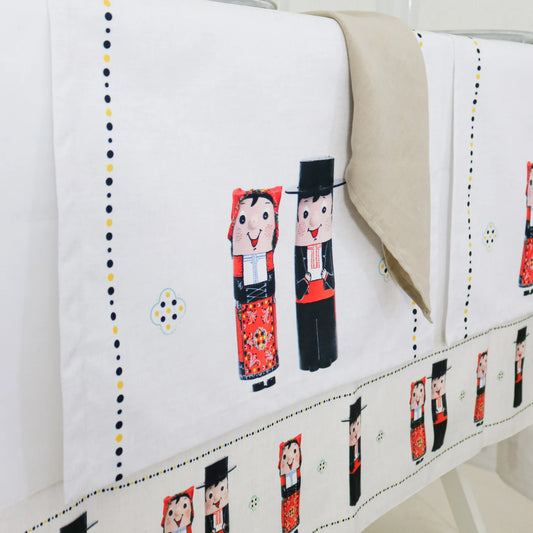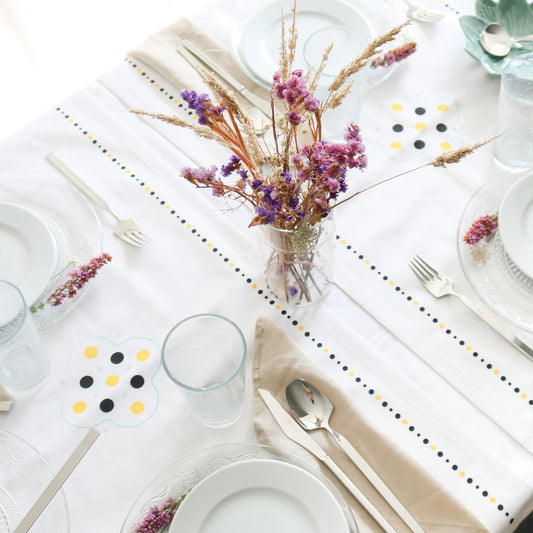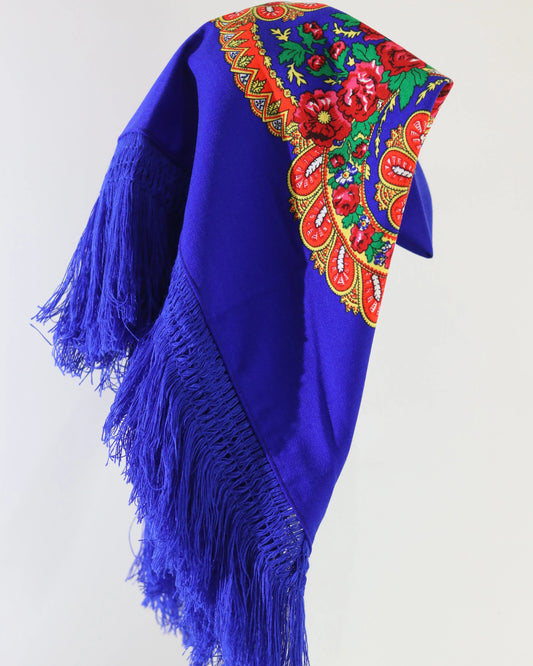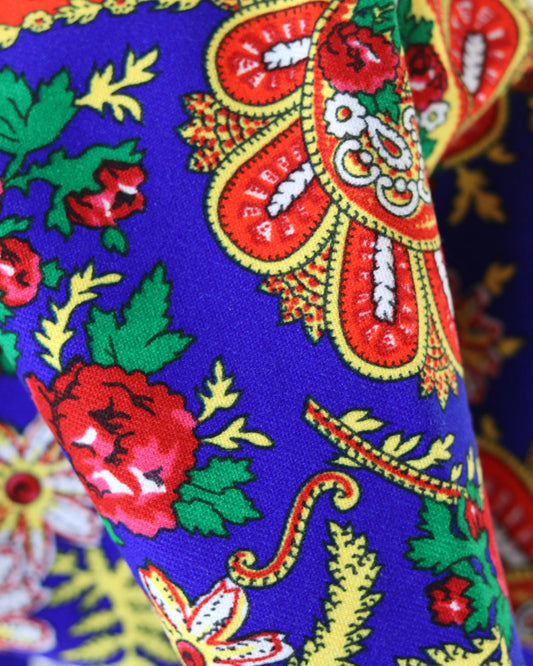The beauty of Santa Luzia Hill: view of faith and love
There are places that combine landscape, silence, and feeling. Monte de Santa Luzia, in Viana do Castelo, is one of those rare spots on the map where the view opens your heart, faith calms doubts, and love finds simple words. You get there in minutes, but it feels like time slows down, as if the Atlantic learned to breathe more slowly.
Where the view meets the Atlantic
From above, the city is outlined in meticulous detail. The Lima River runs straight, meets the bar, and from there on, almost everything is blue. On clear days, the coast stretches north, with fine sand beaches and green fields, and the houses of Viana gleaming in the sun.
Some climb early in the morning, just to see the first gold of the day on the basilica's stones. Others prefer the soft afternoon light, when the granite takes on honey hues and the wind carries sailors' tales. At dusk, the light descends the slopes and illuminates the entire city.
It's a viewpoint that never tires. The lighthouse twinkles, the funicular ascends and descends, a seagull hovers over the Ínsua Fort in the distance. And there's always someone leaning against the railing, silent.
Basilica of Santa Luzia: stone, light and silence
The sanctuary dominates the hilltop with the serenity of one unhurried. The granite lends weight and dignity, and the rose windows let in filtered light, creating an intimate, almost homey atmosphere. Inside, the murmur is low, broken by light footsteps and candles lit in an ancient rhythm.
The architecture combines influences evident in the domes, arches, and reliefs. The harmonious symmetry invites us to look upward, discover details in the stonework, and follow the geometry of the windows that cast shadows on the ground. There's a sense of order that doesn't intimidate, but rather welcomes.
Those who ascend the dome, via elevator and a few flights of stairs, gain a circular view that lingers in their memory. The city appears in miniature, the waves resemble lines in a notebook, and the green of the hillsides provides a backdrop that amplifies everything.
Paths of faith: pilgrims, promises and rituals
Saint Lucy is invoked through her eyes, but also through the clarity of her decisions. In December, the patron saint's feast day brings people to the altar, giving thanks, asking for things, and fulfilling promises. On other days, devotion manifests itself through small, discreet gestures. A sign of the cross, a candle, a two-line note tucked into a pocket.
Faith here doesn't impose, it offers. Those who come out of curiosity find an open door. Those who come out of necessity find a place to rest the weight they carry.
And when there is silence, you hear the echo of many lives passing through the same spot. This grows with time.
Love that can be seen and written
It's common to see couples taking pictures with the sea in their background. Some carry a ring in their pocket, some declare their feelings with the city as their witness, some schedule dates that are etched in their personal calendars. Monte de Santa Luzia is a romantic setting without exaggeration, more honest than pompous.
Love appears in the little things: sharing a blanket in the late afternoon, sharing a coffee at the kiosk, matching steps on the stairs. It also appears in the letters some leave, in the complicity of a hand holding the other on the steps, in the quiet laughter so as not to disturb.
The place gives courage to those who need to express their feelings. And that alone is worth the detour.
How to get there and when to go
Getting to the hill is simple, and each option has its own charm.
- Funicular: Connects the city to the sanctuary on a short, scenic route. Great for avoiding parking and enjoying the climb as part of the experience.
- By car: well-signposted road, parking near the basilica. On busy days, it may require some patience.
- On foot: trails that climb through the greenery, with generous stops for breathing and taking photos. Requires comfortable shoes and water.
- Taxi or TVDE: a practical solution for those who manage tight schedules or carry photographic equipment.
When to go:
- Early morning hours, clear light, fewer people, milder summer temperatures.
- Late afternoon, warm colors, often photogenic sky, pleasant shade.
- Days of light fog, an almost cinematic atmosphere, with the city appearing and disappearing.
Just avoid strong winds and persistent rain. Even then, a break is all it takes to discover a different side of the place.
Three itineraries for a happy day
Romantic Itinerary
- Climb the funicular hand in hand, without rushing.
- Visit the interior of the basilica, five minutes in silence.
- Coffee next to the viewpoint, relaxed conversation.
- Climb to the dome for 360-degree photography.
- Walk down a trail, ending up at the shore for a still warm Berlin ball.
Faith Script
- Early arrival, lit candle and an intention.
- Walk around the nave, observe the light in the rose windows.
- Time for brief reading or prayer, sitting.
- Visit the nearby castro, a link with the hill's ancient roots.
- Walk around outside, giving thanks at a slow pace.
Photographic Itinerary
- Sunrise at the viewpoint, telephoto to the bar and wide angle to the basilica.
- Interior of the church, focus on the granite texture and stained glass windows.
- Mid-morning at the dome, panoramic views and details of the river.
- Afternoon on the trails, frames with vegetation.
- Blue magic hour, tripod and patience.
Details that make the difference
- The main rose window comes to life as the sun turns west.
- The sound of the funicular marks the time, reminding us that there is always someone arriving.
- The staircase organizes the visit, inviting you to stop at different levels, like chapters in a short book.
- The wind, almost always present, is part of the scenery. Bring a light jacket, even in summer.
| Experience | Why it's worth it | Quick tip |
|---|---|---|
| Climb to the dome | Circular view enlarging memory | Bring coins or a card for entry. |
| Sitting in the nave, silence | Rare mental rest | Turn off your cell phone for ten minutes |
| Walk around the esplanade | Different angles of the same postcard | Look for the river line as a visual guide. |
| Descending trail through the forest | Smell of earth and resin, friendly shadows | Shoes with grippy soles |
| Visit the castro | History before history | Read the signs on site, they are informative. |
Flavors with a view
After the climb, you'll crave solid flavors. In Viana do Castelo, cod is king, and it's well-received in the city's restaurants. Sarrabulho rice in winter, sarrabulho porridge for cold days that call for comfort, and a list of snacks that includes fritters, octopus à lagareiro, and Minho-style rojões.
Sweets? There are Berlin balls in bakeries near the waterfront, French toast during the holidays, tocinho do céu, and other convent recipes that have been passed down through generations. A coffee with a view, a moist sponge cake, and life goes better.
There's nothing stopping you from bringing a snack upstairs, but it's best to keep the space clean. A trash bag in your pocket goes a long way.
Layered History
Long before the basilica, the hill was already home to ancient communities. The Santa Luzia hillfort preserves the remains of a fortified settlement from the protohistoric period. The ruins tell a story of hand-laid stone, of living at altitude for safety and views. Walking among these foundations gives scale to our presence there.
Over time, the hill welcomed hermits, chapels, and pilgrimages. The construction of the sanctuary in the early 20th century formalized a long-held desire of the city, which began to view the hill not only as a geographic landmark, but as a place of belonging. Modernity arrived with roads, the funicular, and organized tourism, and yet the essentials remained.
There's a beautiful continuity between past and present. The view is the same, the desire to climb is the same. The way of telling the story changes.
Photography: light and meteorology
- Wide angle to the staircase and domes.
- 50 mm for discreet portraits with a sea background.
- Polarizing filter to control glare from the river and Atlantic.
- Lightweight tripod, useful during the blue hour and inside the basilica at moderate ISO.
- Cloudy day, soft contrasts that favor the stone.
- After the rain, interesting reflections and clean air.
A quick rule of thumb: If the wind is strong, lean against a wall or use your body for support to avoid shaking. And clean your lenses; sea salt gets everywhere.
Respect the place
- Discreet clothing inside the temple.
- Low voice, cell phone silent.
- Drones only with authorization, for safety and respect.
- No trash, no cigarette butts, no snack scraps.
- Dogs on leashes, especially near stairs.
Taking care of the space improves everyone's experience. And it weighs very little.
Questions that always come up
Do I need a ticket to enter the basilica?
- No. Admission is free. There may be a fee to climb the dome.
Does the funicular operate all year round?
- As a rule, yes, but it's a good idea to check high and low season times.
Can I go with a baby stroller?
- Yes, with attention to the stone floor. The interior of the basilica is accessible.
And what about those with reduced mobility?
- There's a ramp and elevator access to the dome. Ask on-site for information; staff will be happy to assist.
What is the best month?
- May, June, September and October, mild weather and less crowds.
Does it rain a lot?
- Minho is generous with water. Bring a light raincoat and a smile.
Can I arrange a marriage proposal?
- Of course. Talk to a local cafe about flowers and a simple toast. The sunset does its part.
Can it be combined with the beach?
- Yes. Praia Norte, Cabedelo, and Afife are just a few minutes' drive away.
View, faith and love, side by side
The view isn't just a backdrop; it's an invitation to gain perspective. Saying this there, leaning against the warm stone, seems obvious. The sea helps organize ideas, the river organizes thoughts. The city, seen from above, loses its noise and takes shape.
Faith, even for those who don't practice it regularly, appears as a kind of calm. The basilica doesn't impose dogma; it offers shelter. It's easy to enter, sit, breathe, and leave feeling better.
The love that flows in low conversations, in held hands, in whispered promises, finds a simple and genuine stage in Monte. The landscape lends depth to the words, and this has a rare, almost therapeutic effect.
A postcard that changes with the season
In winter, short days and leaden skies. The granite grows darker, the stairs gleam with humidity, the rose window glows from within. In summer, dry heat at the top and a gentle breeze, people spread out across the observation deck, photograph after photograph.
In spring, greenery creeps up the slopes, making everything more vibrant. In autumn, slanted light pours in late afternoon, leaves on the ground, a honey hue on the domes. It's the same postcard, with a different palette.
Repetition never tires. Go back and compare.
Small rituals that create memory
- Take a notebook and write three lines while the funicular goes up.
- Count the steps on the stairs without losing the conversation.
- Give thanks out loud or silently, as your heart tells you.
- Share a hot soup in winter, cold soup in summer.
- Choose a word for the day, repeating mentally as you leave: peace, focus, courage.
They are simple gestures, but the sum of these details sticks to the experience.
Practical tips that save time
- Parking: Arrive early in August and on sunny weekends.
- Money: Small change for tickets and coffees makes life easier.
- Clothing: always have a light coat handy, even when the sky is clear.
- Water: especially if you go up on foot, there is shade but the climb requires hydration.
- Respect the celebration times, so as not to interrupt ceremonies.
A short plan written on a cell phone, half a dozen notes, and everything flows.
Viana do Castelo down there, so close
After the hill, descend into the city and pass by Praça da República. The fountain, the Misericórdia church, the bright flagstones. Stop by the Gil Eannes ship, the pier, and the shops where the gold filigree shines with art and tradition. The hill continues behind, as if watching over you.
It's nice to feel like you can go up and down in the blink of an eye. The hill and the city converse. The river is the phrase that connects the two pages.
There are those who just sit there, watching. There are those who mark their next visit on their calendar. And there are those who keep only one image, the one that matters most: the moment when sight, faith, and love coincided, effortlessly, in the same place.



